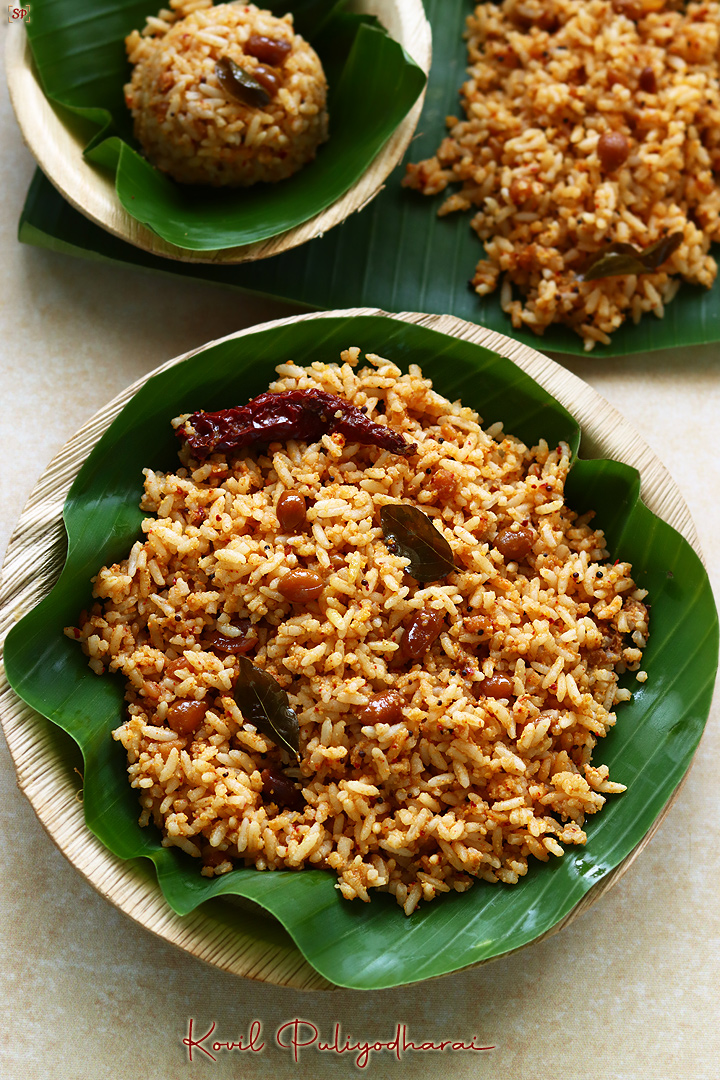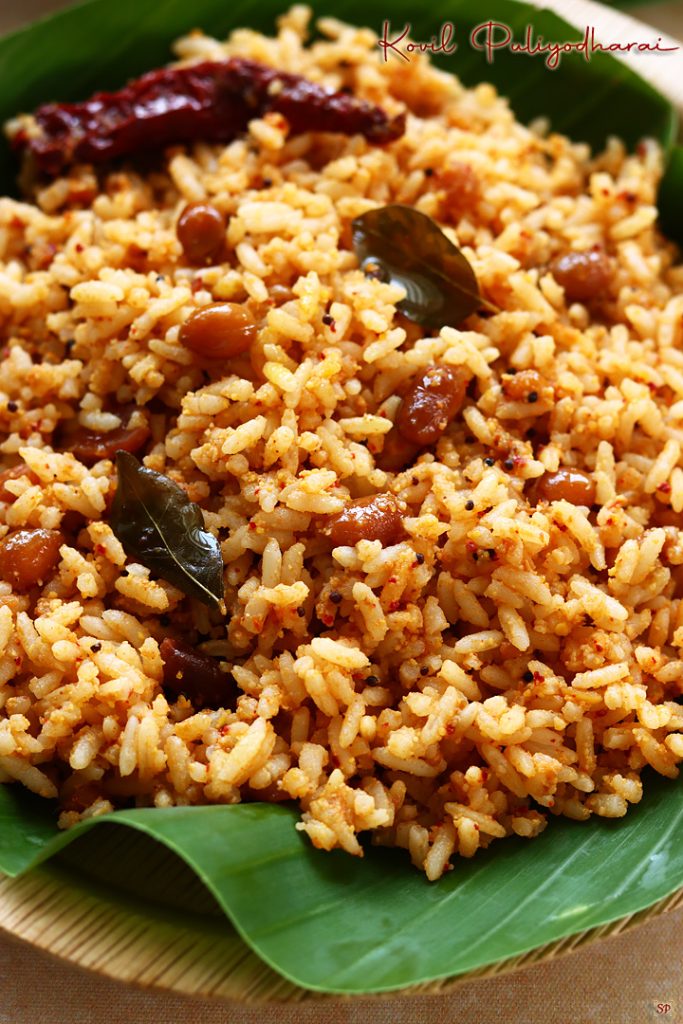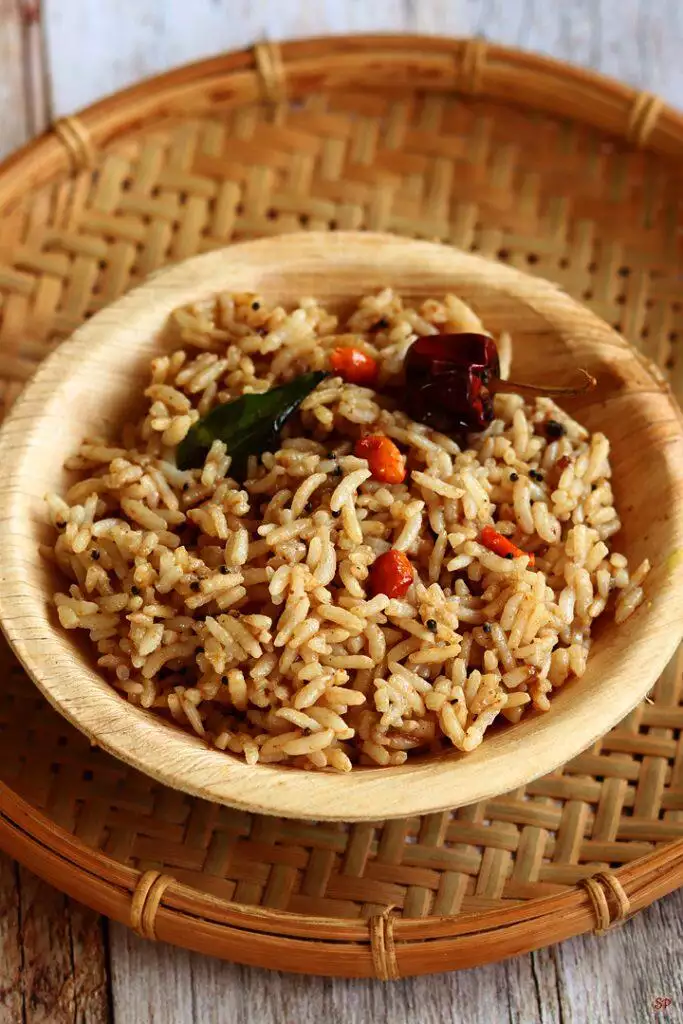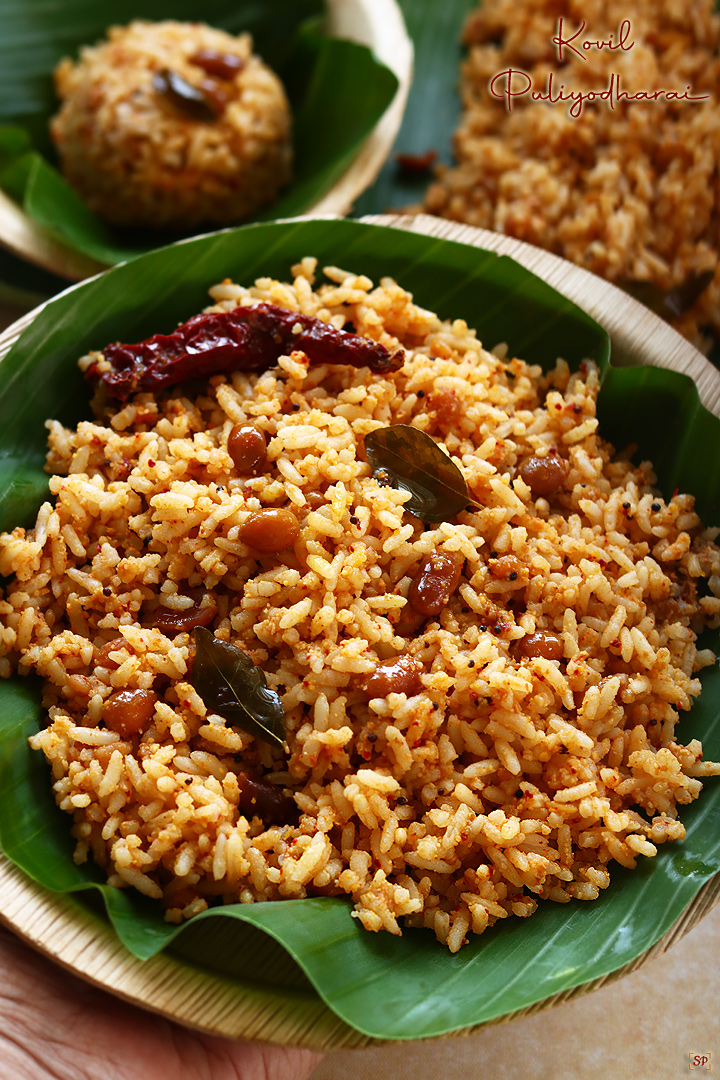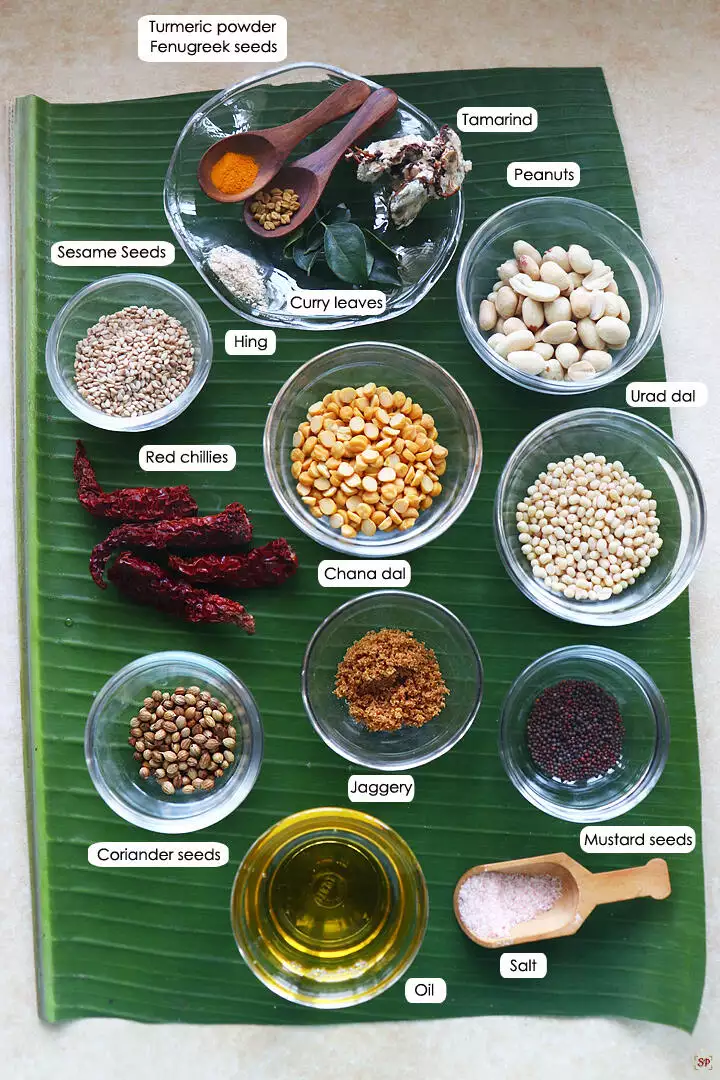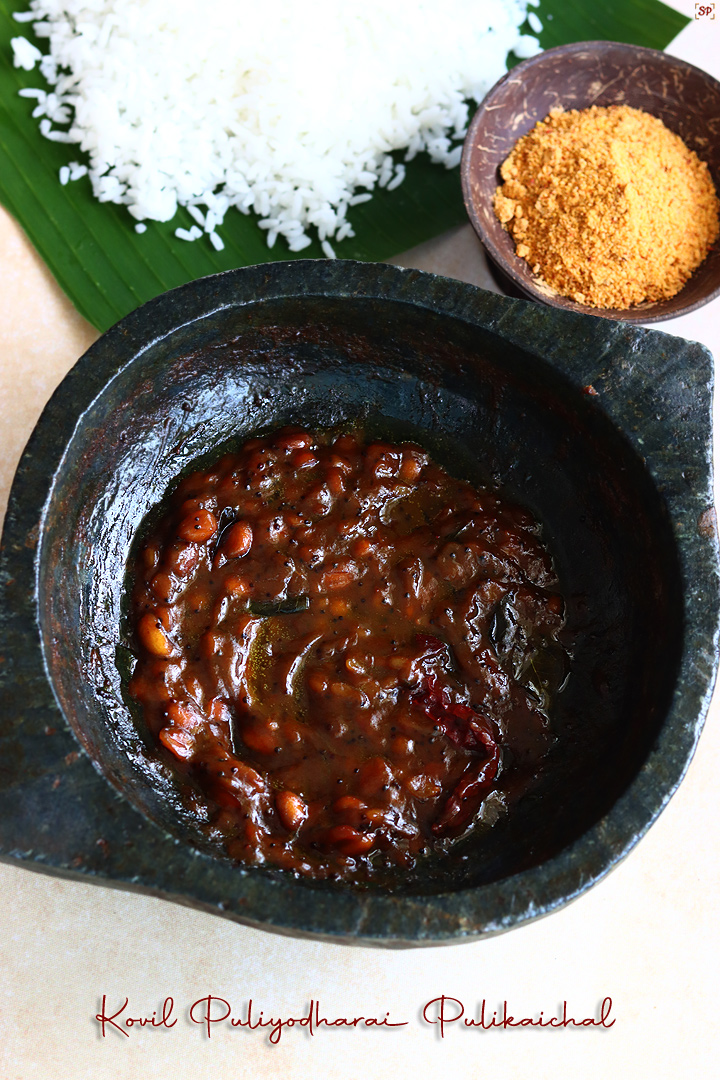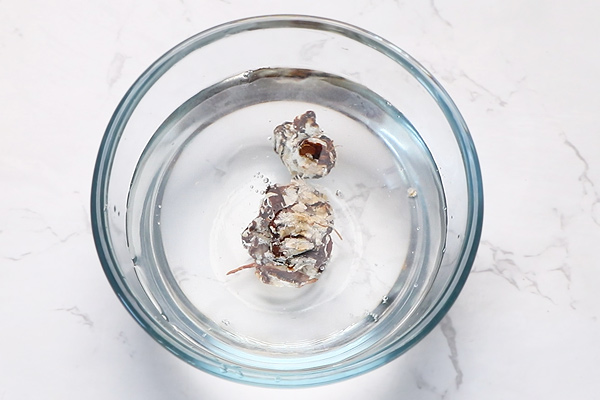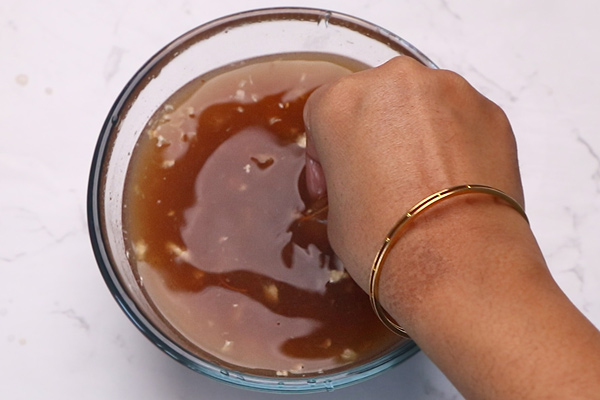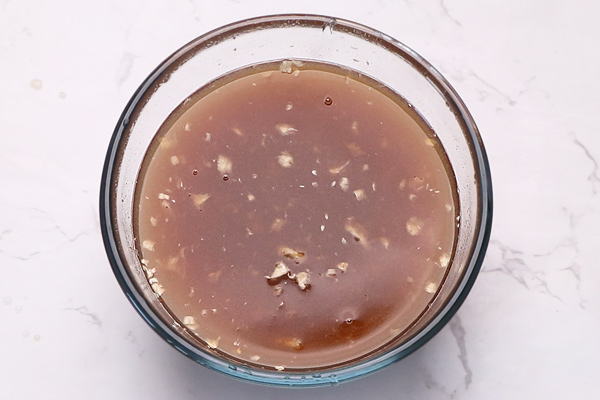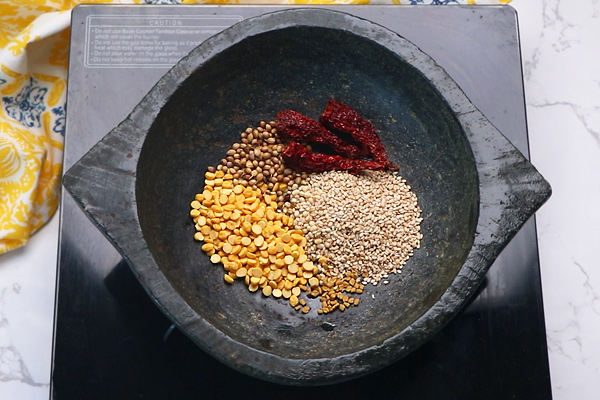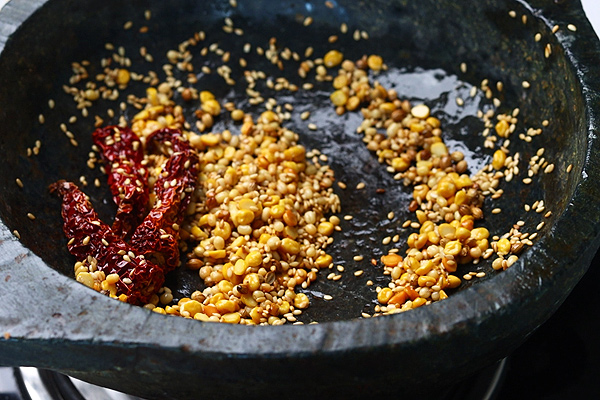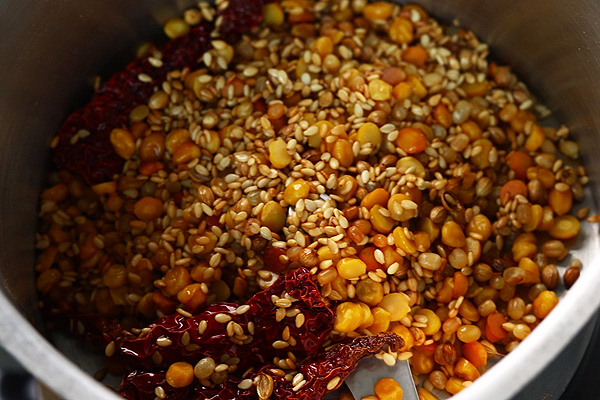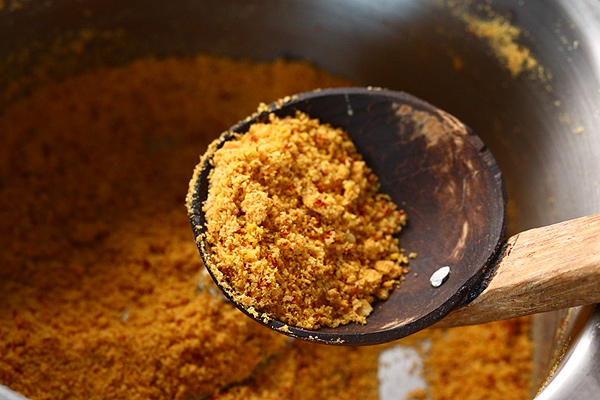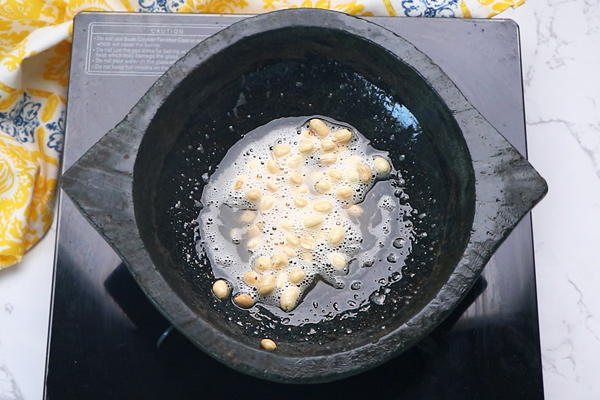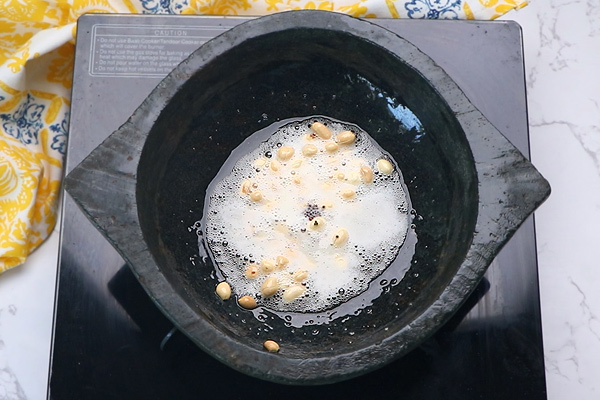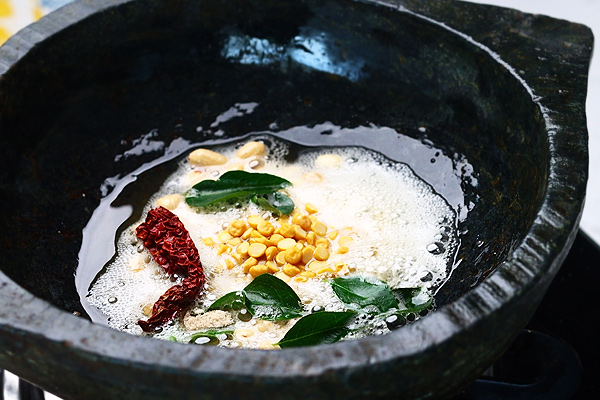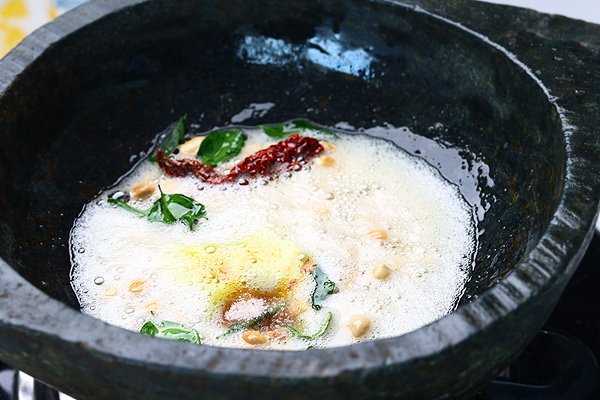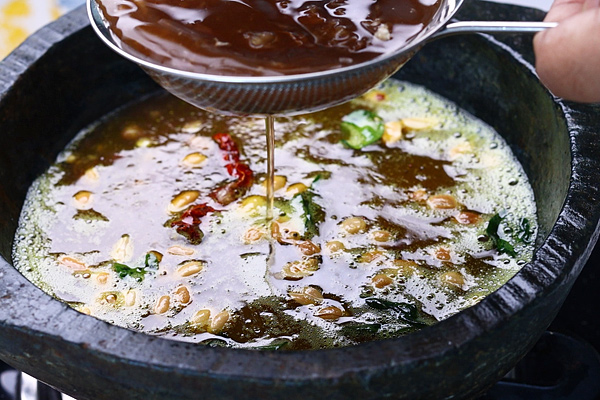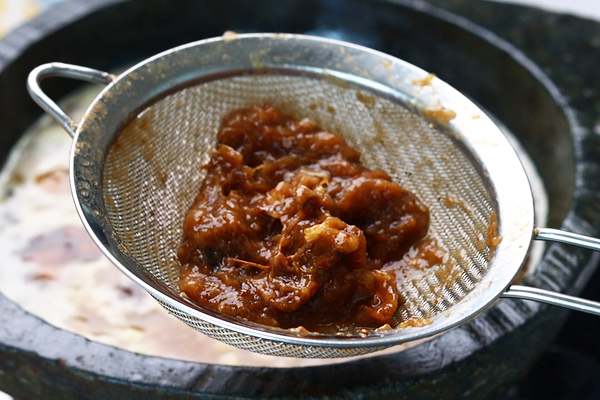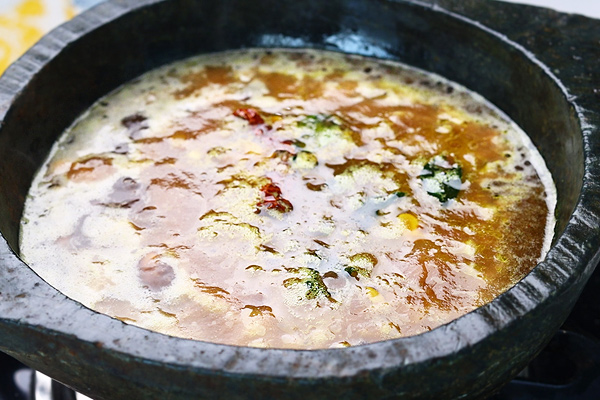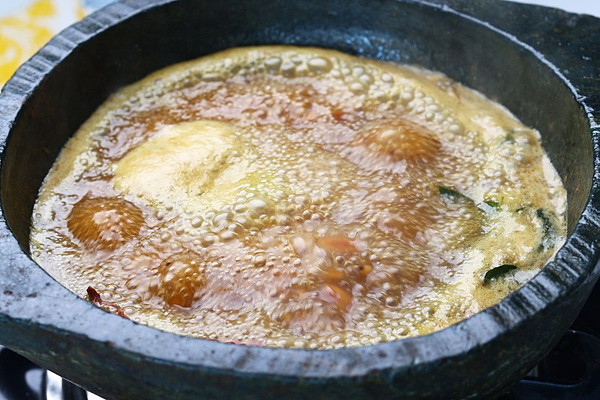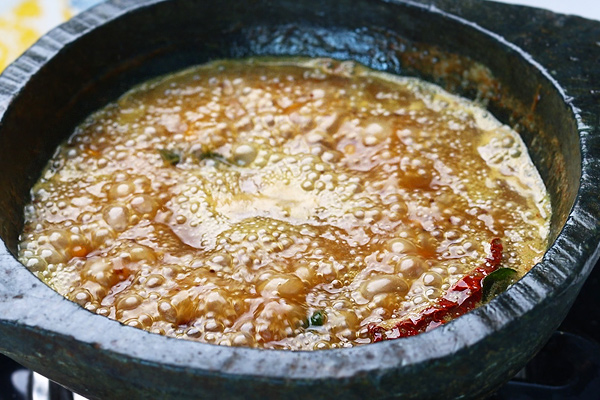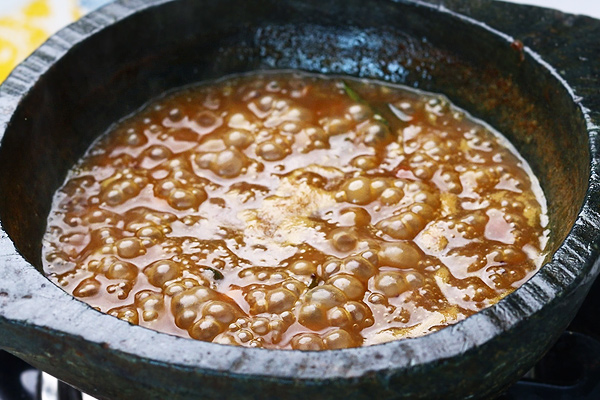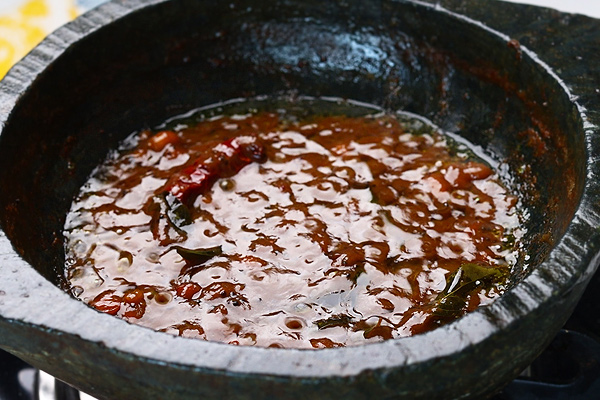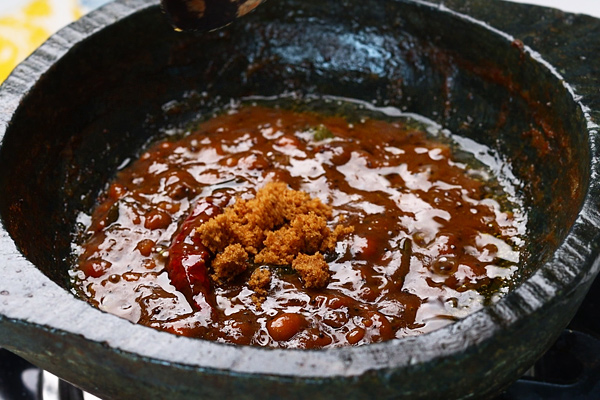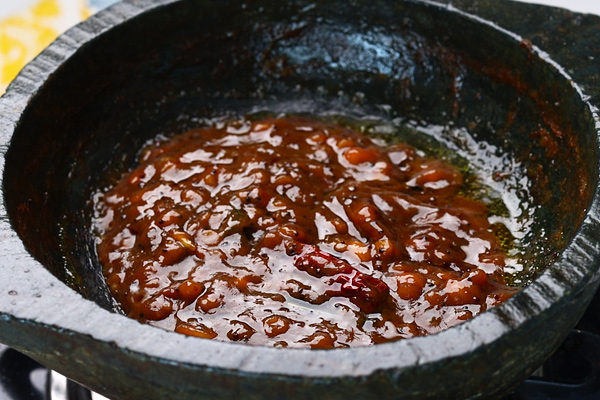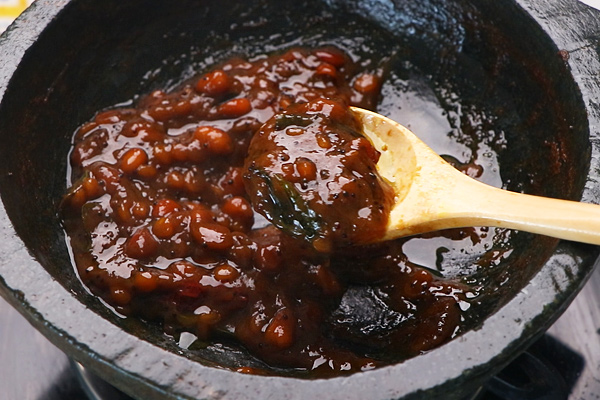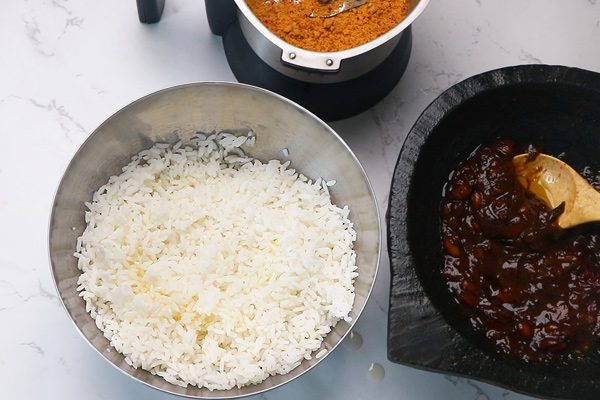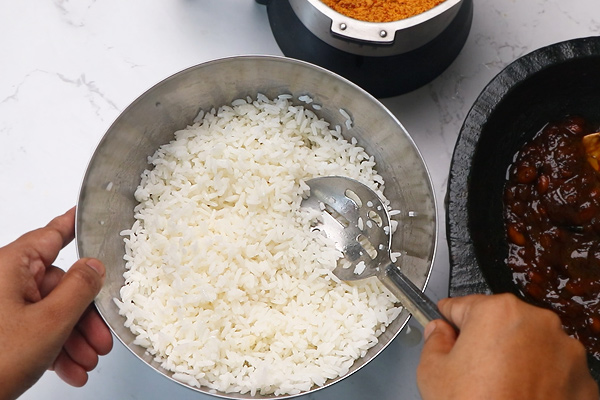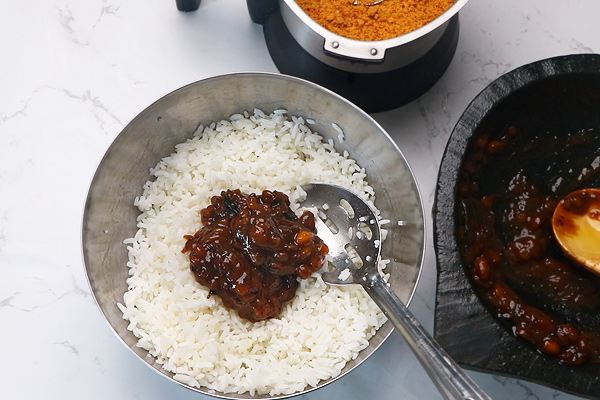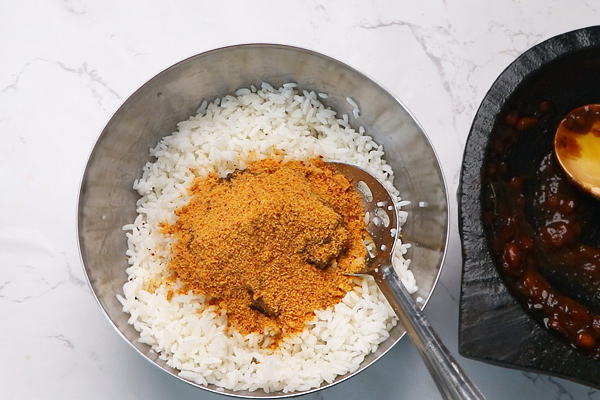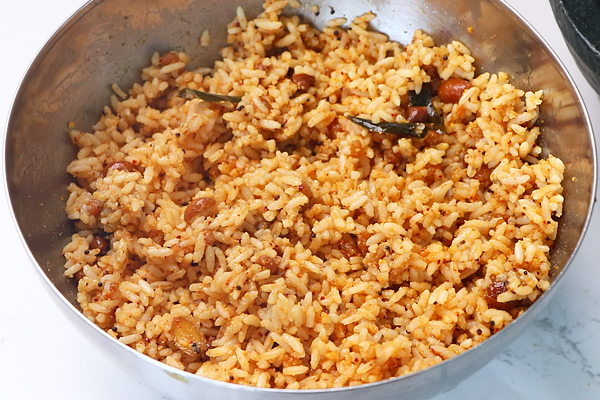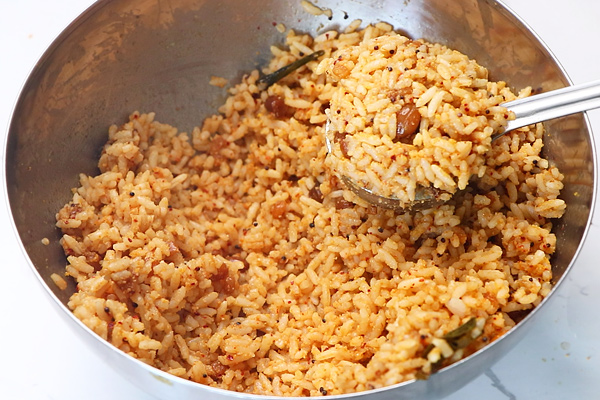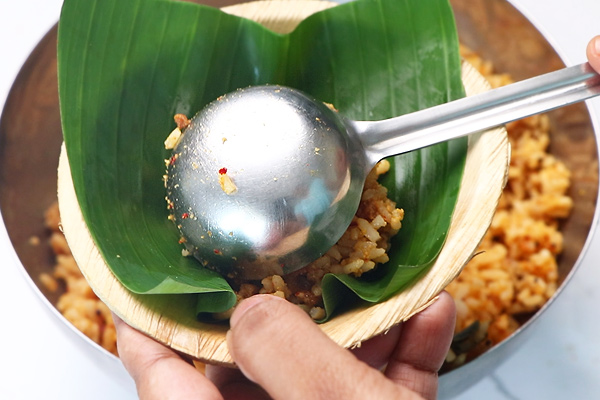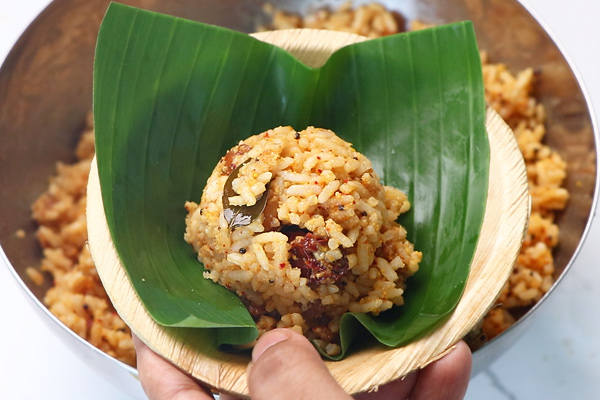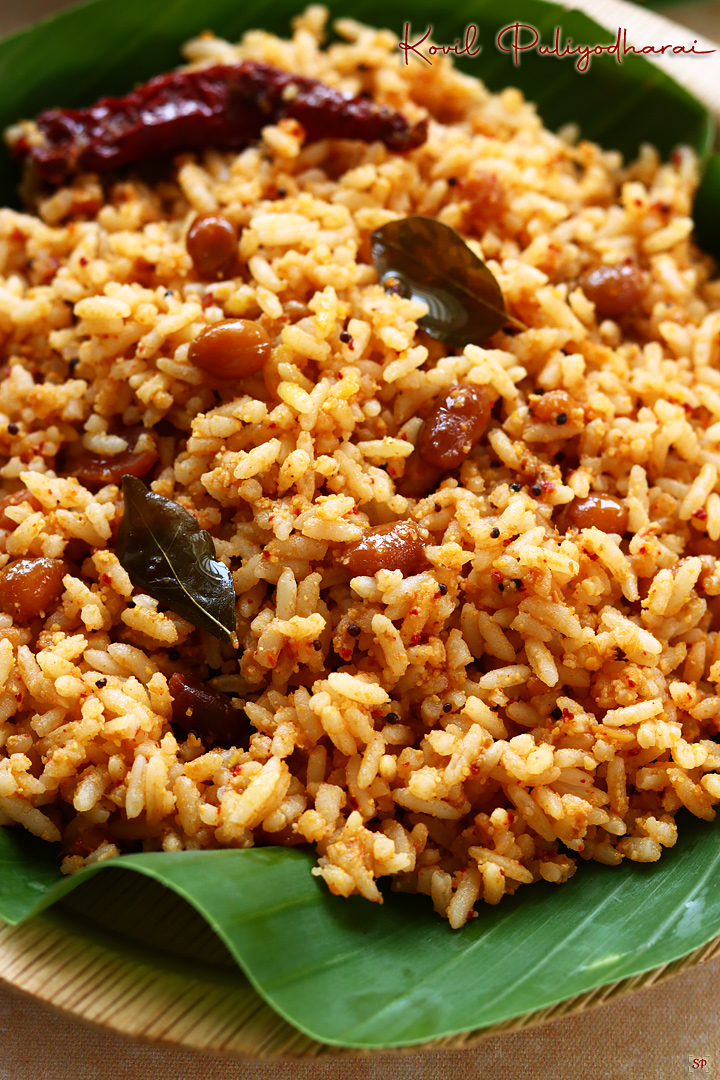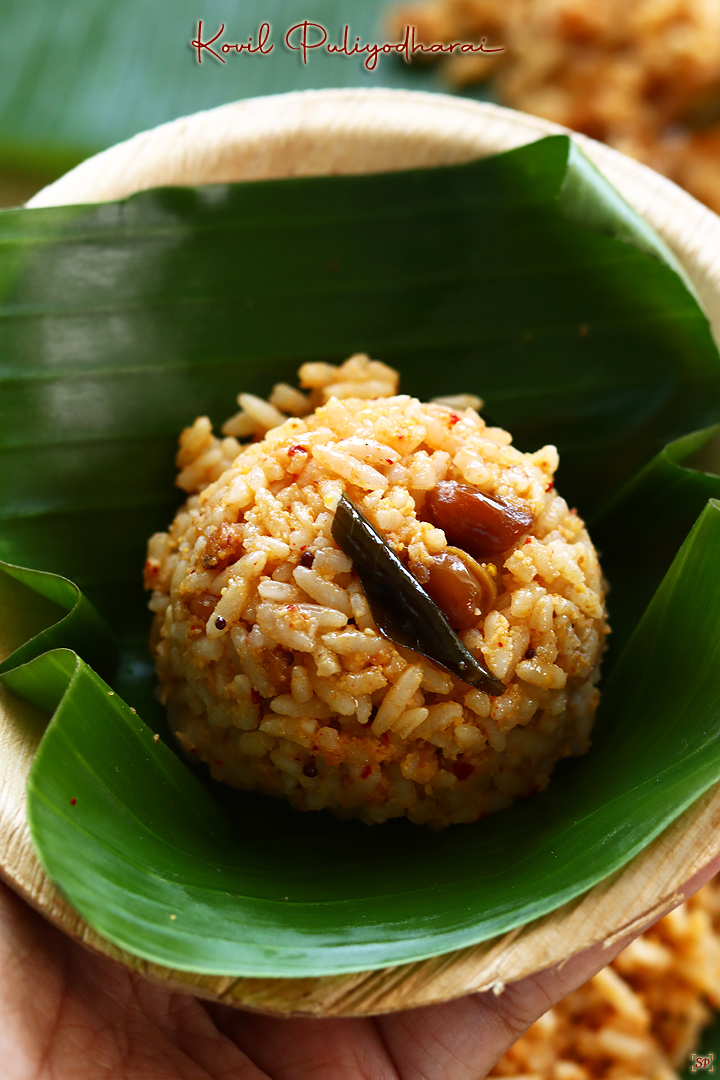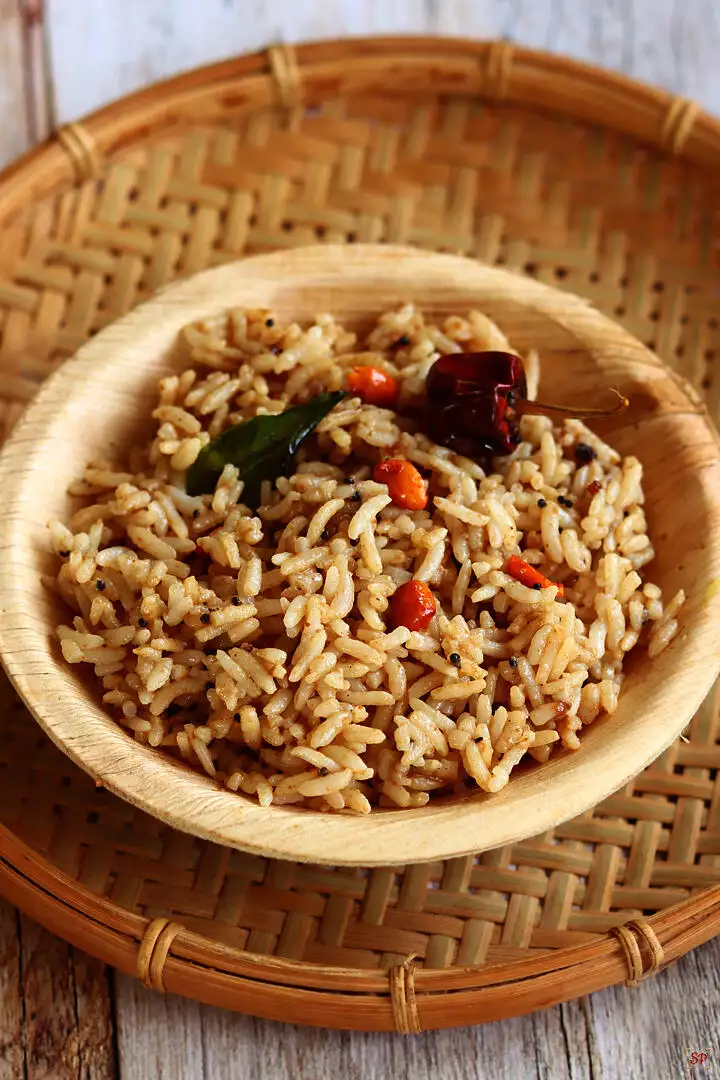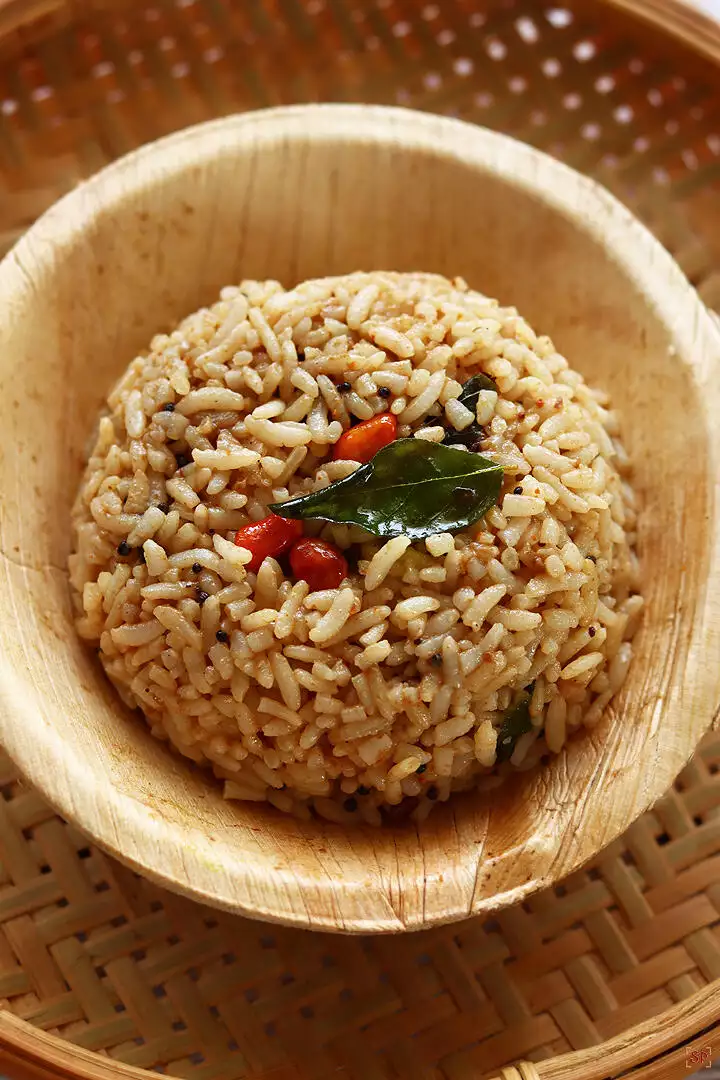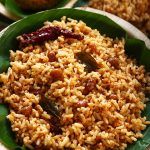Puliyodharai also called as Puli Sadam or Tamarind rice is one of the most popular variety rice in Southern States of India. Though the preparation of Puliyodharai varies from each state to another it is one of the travel staples as it does not get spoiled easily.
About Puliyodharai
Puliyodharai is prepared on special days, festive occasions or for travel. Puliyodharai is prepared in 3 steps : first a homemade special freshly roasted spice mix is prepared using lentils second a tamarind paste is prepared with tadka, lentils, peanuts, jaggery etc finally both are added to cooked rice and mixed to make Puliyodharai.
Puliyodharai – Puli Sadam
I have shared 2 versions :
Traditional temple style puliyodharai – This is a authentic version of puliyodharai. Puliyodharai served in temples is popularly called as Temple Style Puliyodharai or Kovil Puliyodharai as we call in tamil. Kovil Puliyodharai has always made me wonder, it gives a divine taste. Easy and quick version of puli sadam – This puli sadam recipe is quite simple and takes less time and effort so comes handy when you are in a hurry perfect to pack for lunchbox or travel.
Video
Though I always prefer the first version whenever I make puliyodharai the second version comes handy when I am pressed for time. I love this so much that whenever its puliyodharai I go blindly with this recipe as my family loved this version as it tastes just like in temples.
Puliyodharai Ingredients
Cooked Rice – Cook rice separately in cooker or using draining method, fluff it and spread it to cool down. Tamarind – The quantity of tamarind slightly varies depending on the variety of it used so use accordingly. Tadka – A simple tadka using mustard, red chillies, chana dal, hing and curry leaves is made. Lentils – A special homemade spice mix is made using chana dal, toor dal, urad dal, sesame seeds, coriander seeds and red chillies. Peanuts – Peanuts is one of the main ingredient for Puliyodharai. Jaggery – Jaggery gives a nice tangy taste and balances the sourness. Spice Powders – Turmeric powder is used here. Gingelly oil – Gingelly oil is best for this recipe however you can replace it with regular cooking oil too.
Pulikaichal and the puliyodharai powder can be made ahead of time and stored. You can make the rice fresh and mix it when needed. Once when I took this to office, my colleges were in praises for me. I’ve already tried a slightly different version of Puliyogare and when I wanted to try this, I doubted whether adding the roasted powder separately – But believe me, adding the roasted powder separately gives a totally nice flavor, crunch and sure it tasted differently.
Puliyodharai Recipe Step by Step
1.To a bowl add 1/4 cup tamarind add 1 and 1/2 cups water. 2.Crush it well. The tamarind should be crushed well as you can see. 3.Tamarind extract is ready. Set aside. 4.To a kadai add 1/2 teaspoon gingelly oil heat it. Then add 1 tablespoon urad dal, 1 and 1/2 tablespoon chana dal, 1 tablespoon coriander seeds, 2 red chillies, 1/2 teaspoon methi seeds and 1 tablespoon sesame seeds. I used my kalchatti – stone cookware here. 5.Roast it in low flame until golden brown. 6.Transfer to a mixer jar cool down. 7.Then grind it to a slightly coarse powder as you can see. 8.To the same kadai add 3 tablespoon gingelly oil and heat it. Now add a fistful of peanuts. Fry for a minute. 9.Add 1 teaspoon mustard seeds let it splutter. 10.Then add 1/2 teaspoon urad dal, 1 tablespoon chana dal,1 red chilli, few curry leaves and 1/4 teaspoon hing. 11.Give a quick mix add 1/4 teaspoon turmeric powder, salt to taste give a mix and fry until dal is roasted. 12.Add prepared tamarind extract to strainer press well to extract pulp completely. Press and crush well while straining. 13.Discard the remains. 14.Give a quick mix. Let it boil. 15.Let it boil and reduce. 16.Stir in between. It takes time so keep an eye. 17.Water slowly starts reducing and the mixture becomes thick. 18.The mixture has become thick and oil has started to separate at the edges. this is the right consistency. 19.Add 1 teaspoon powdered jaggery. 20.Give a quick mix and switch off. 21.Pulikaichal is ready. Cool down for a while. 22.Now add 2 teaspoon of gingelly oil to 3 cups of cooked rice. 23.Mix it well. 24.Now add prepared pulikaichal to rice. 25.Then add roasted powder to it. 26.Mix it well. 27.Kovil Puliyodharai is ready. Scoop using a deep curved laddle. 28.Serve in banana leaf – This is how they serve in temples. 29.Perfect Puliyodharai is ready! Kovil Puliyodharai is ready!
Expert Tips
Check and adjust salt after the pulikaichal reduces. The grain of rice will be slightly sticky as in temples so do not make too grain separated. Rice should be perfectly cooked soft and fluffy. Adding jaggery is optional, but I recommend adding it for a perfect balance. You can store both the pulikaichal and the roasted powder in fridge and it stays well for about a week. Do not reduce oil and I recommend using gingelly oil as it gives nice flavour to this dish. I used regular white rice we use that is Ponni Puzhungal variety.
Serving & Storing Suggestion
You can serve with vathal or papad. Puliyodharai tastes best on its own too. You can store Puliyodharai in room temperature for 2 days. But you can store the pulikaichal and the roasted powder for about a week to 10 days in fridge.
Puli Sadam
Puli Sadam is best for lunchbox and for travel as it doesn’t get spoiled easily, also the resting time enhances the flavor of puli sadam, yes try it and see. This version of Puli Sadam is very easy and quick to make during our busy days.
How to make Puli Sadam
Puli Sadam is ready! If you have any more questions about this Puliyodharai Recipe do mail me at [email protected]. In addition, follow me on Instagram, Facebook, Pinterest ,Youtube and Twitter . Tried this Puliyodharai Recipe ? Do let me know how you liked it. Also tag us on Instagram @sharmispassions and hash tag it on #sharmispassions.
📖 Recipe Card
